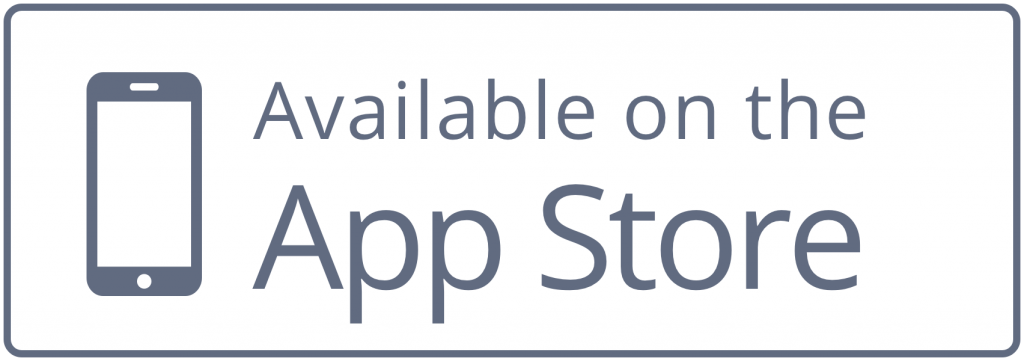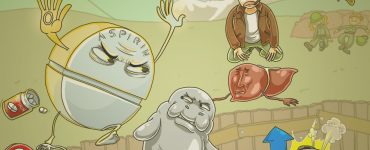First years, listen up! If you want to get a high score on your USMLE STEP 1 exam next year, start studying EARLY. It’s the best way to ensure you will have the time to review the material thoroughly without all that painful (and counterproductive) cramming. Plus, using the right tools and study methods early will help your retention and save you time later.
Scoring a 274 on USMLE STEP 1
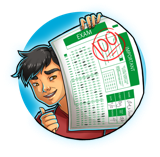
I used Picmonic to review material and remember all the facts. If you read, listen to or watch something, and then also answer questions on the topic, you will retain the information better. I started using Picmonic for this reason. When I was in microbiology learning about gram-positive bacteria, I learned it using the Picmonic cards. I listened to the audio for each card once I started a new topic, and then during the week, I reviewed them right before going to sleep. Fun side effect – you might have some crazy dreams as I did, but it made the facts stick. And that’s the whole point. During the microbiology block, Picmonic was absolutely my best friend.
I exceeded my goals because I started early; in August before my second year began. I experimented a bit with different methods but then developed a schedule and a study routine for myself, based on a few guiding principles that I will share with you.
Have a score in mind you want to achieve

The average USMLE STEP 1 score is 230. My initial goal was 240. It seemed like the magical number that would at least get me in the door at most specialties. But, when I started getting 250s on my practice exams I tried to push for a 260. This is the first tip I want to share with you. Get a score in mind that you want to achieve and work towards it. You need goals in order to push yourself further. If you surpass your goals then keep moving your target! That will help you achieve the highest score possible. Don’t sell yourself short. Believe in yourself and get the USMLE scores you deserve!
Use resources that will help you learn important topics.
The first principle I used was the idea that we can only remember about 75% of what we see and/or read. Since second year U.S. medical students are not in clinic yet it can be hard to remember everything without actually experiencing it. This concept led me to use multiple resources with different learning modalities. For example, if you read, listen to or watch something, and follow it by answering questions on the topic, you’ll retain the information better.
Everyone’s got their own ways of learning and retaining information – but Picmonic helped me immensely to have a starting point for memorizing the topics I needed to learn. For me, it worked best for biochemistry and microbiology. My advice is to focus on doing whatever cards you are currently learning in class. They continually add more topics at Picmonic, with more than 1,400+ videos currently, and they are organized to correlate directly with what is in First Aid for the USMLE STEP 1 so you know Picmonic is providing essential information that will show up on the exam. The amount of questions I got right in biochemistry and microbiology was mainly due to Picmonic so I would highly recommend it.
Review the same topics with different resources, and narrow down as you go

Because I knew I would forget things, I decided that I was also in need of spaced repetition. I did this by narrowing down resources as second year went along. I’ll explain this in detail later, but I would start with subject books focused on anatomy, biochemistry, etc. BEFORE using a comprehensive review source like First Aid for the USMLE STEP 1. Then, I incorporated Firecracker once I started using the Qbanks.
I spent the fall of my second year getting a much broader understanding of the topics I covered in first year, as well as learning about topics we would cover in the upcoming spring semester. While you may not remember everything by reading books, you will become familiar with the book itself and will be able to use it for quick reference during “dedicated” step study time. Then, when you have to review the topics like, let’s say, the difference between conus medullaris and cauda equina syndrome, you have a general sense of where it is in the book, quickly jogging your memory rather than having to learn it for the first time.
Picmonic was also a great resource throughout this review period. They organize everything by topic (Playlists) so it is easy to focus on the Picmonics that relate to each book as you are reading it. If I had already learned the Picmonic I would review it again but occasionally I would be learning a Picmonic in the topic Playlist that I had not seen before. By reviewing Picmonics by topic area, I made sure that I filled in any gaps that might have existed in my school’s curriculum.
Practice, Practice, Practice
The last principle I want to share with you is that it takes practice. It takes doing something many times to become proficient. In my case it was 10,000 Qbank questions. They weren’t necessarily all unique questions. Sometimes I reviewed the same question multiple times.
The way I approached each Qbank question was to go through the thinking process of eliminating all the answers for a certain reason. For instance, the first time I saw a question I only knew what the correct answer was but all the other choices didn’t make sense. The second time I saw the question I tried to eliminate all the others based on the information in the stem in order to lead me to the correct answer. This made the question just as valuable the second time around and helped me learn the material more thoroughly.

Using Qbanks to Prep for USMLE Step 1

During the spring semester of my second year, I started using the Qbanks. After all of the review reading I did in the fall of my second year, you might think that I would be prepared enough to answer Qbank questions but it really doesn’t happen that way. It takes time to understand how concepts are going to be asked and what the important information is.
The first time I saw a question, I might have only known what the correct answer was but I took the time to go through all of the other answers to make sure I understood why they were NOT correct. The second time I saw the question, I tried to eliminate all the other answers based on the information in the stem in order to lead me to the correct answer choice. This made the question just as valuable the second time around.
When doing Qbank questions, I referenced Picmonic when I came across an answer for which I was not familiar. I looked for the Picmonic I had not yet reviewed. By reviewing Picmonics by topic area, I made sure that I filled in any gaps that might have existed in my school’s curriculum.
Qbank #1 for STEP 1 Prep: USMLE Rx
There are just over 2,700 questions so try to have it done by the end of February. The questions all have links to the page where the topic is in First Aid for USMLE STEP 1. This helps you get acquainted with First Aid and where everything is. I cannot tell you even after doing this multiple times, I would write something somewhere and then find it printed somewhere else. Learn where things are in First Aid and you’ll save yourself time from writing down redundant information. Go through the Qbank by the way it is divided in First Aid. For instance, I started with the Behavioral Science section in First Aid and then would answer the questions associated with that topic. This will be your first read-through First Aid and will also aid in the familiarity of the information’s location. For pharmacology and pathology, I answered the questions by organ system instead. Reading First Aid and then answering questions about the topic helps cement the information. I did the questions in tutor mode because immediate feedback is so important. I only used timed mode when I was in my final prep period. I will explain this in more detail later.
Qbank #2 for STEP 1 prep: Uworld
The reason for doing Uworld USMLE Qbank second is that you can reset this bank, and you want to do this twice because it really is the best prep for the detail on the exam. This will be your first pass through the bank. It is harder than Rx so don’t worry if you see your scores drop. Also, unlike Rx, when you click on an answer it doesn’t let you change it and it shows you the explanation. Don’t set up the questions by specific topic like you did with the previous one. Select ‘all subjects and organ systems’ so you get a feel for what it’s like to have mixed exams. You’ll want to complete this 3 months before exam day.
Qbank #3 for STEP 1 prep: Kaplan
Kaplan USMLE Qbank tests a lot of minutiae but I got several questions on my exam correct because of the questions here. This was also the only place I saw Menkes disease (it is definitely in First Aid in the biochem section) so you know it has been on the real thing before. The bank also does a good job of giving you plenty of practice with the arrow questions for physiology. For example, the patient comes in with this disease, happens to x, y, z. It is also the best for behavioral science and laboratory medicine. First, do the diagnostic exam to see where you are after two Qbanks. Do it in tutor mode with all subjects and organ systems selected. Write down the key concept again with the transcription to First Aid. You’ll want to try to complete this Qbank a few months before you take the exam.
During the time I used Uworld and Kaplan Qbanks, I read First Aid for a second time. Take the time to find information that you missed in your first pass. You’ll start to be surprised by how much you missed and how much information is actually in First Aid.
Additional Tips and Resources that Helped me Succeed
Dedicated STEP 1 Study Time
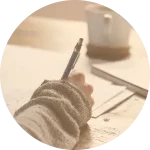
This is really up to the individual, but this is how I did it and I don’t think many other people did it this way. I scheduled five weeks of dedicated study time. Do what works best for you, by this time you should know where you are and where you need to go. I don’t think any of the DIT or Falcon review courses are worth it. Those courses are designed to help people pass STEP who haven’t been studying hard during their second year.
Taking a second pass with the Uworld Qbank (4 weeks).
I set it up for timed and again selected all subjects and organ systems. I made sure to review the entire test after I completed it. This helped me get prepared for the real thing by getting my timing down and working on my thinking process. I stopped worrying about whether or not I got a question right and just learned to try my best and move on. During my review, if I missed a question I worked on it. Don’t worry if you aren’t getting every question right! I know of people who had a second pass percentage rate around the 80% mark and still did well. The key is to figure out why you missed those questions the second time around. I did my questions every morning.
Use Firecracker for USMLE Prep
This is not how most people use this program, but based on my experience with it during my first year this is what I did because it worked for me. I completely reset my account so that I did not have any topics flagged. Prior to this, I may have flagged about 40% of the topics with none from the organ systems section. Then, I did approximately 50 topics a day so that I could finish everything within four weeks. It is definitely a lot towards the end but this was my way of reviewing as much as I could with spaced repetition so I wouldn’t forget what I learned in the first week by the time I took the exam 5 weeks later. I knew after the Kaplan diagnostic exam where my weaknesses were so I did those sections first to give myself the opportunity to see those cards the most. This may not be for everyone but it definitely helped me with my microbiology, dermatology, reproductive, and renal questions that were a relative weakness going into dedicated study time. I hear a lot of people are using Osmosis now.
Comprehensive Basic Science Self-Assessment (National Board of Medical Examiners)- CBSSAs — DO THEM ALL!
All of the ones online are around $50 and there are six so it is an investment but I saw several questions and pictures from these on my actual exam, so it is a worthwhile investment. Try to do one every week starting with the first week so you can have them done before your exam. Don’t stress too much about your scores. Most people I have talked to tend to get a score a few points above their highest CBSSA. Also, this is a great chance to meet with a study group.
Throughout my second year, I met with a group of like-minded students who were dedicated to STEP studying at an early date. We would meet once a week for an hour and answer 10-15 questions from a question book and just discuss how we each arrived at the answer. We continued this process by meeting up on Sundays to discuss the questions we missed on the CBSSA. You don’t get the correct answer for the questions you missed if you choose extended feedback (you should choose this option, it’s $10 more but you only take STEP 1 once so it’s worth it!). You just get the question and detailed statistics on the different subjects and organ systems. You can use this to tailor your studying for the next week if you aren’t doing the Firecracker method.
USMLE Step 1 Prep Schedule
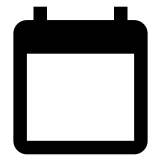
Last week before the exam
Do the two practice exams on Uworld. They are pretty good but tend to overestimate your actual score. Try to focus once again on limiting the number of mistakes you make in your thinking process. At this point, you know or have seen it all and it is just about minimizing stupid mistakes. By that, I mean mixing up biostatistics formulas or other simple questions that are supposed to be the easy ones.
You can’t get the highest score you’re capable of without learning to do this. For example, one of these practice exams was a classic “EXCEPT” question. STEP isn’t allowed to ask these questions anymore but they have a technical way of doing it. They give you a vignette and you have no clue what it is. You look at the answer choices and see that you know four of them but the other one is a mystery and you’ve never heard of it. The point of the question is to know those more common four and exclude them based on the information in the vignette so you can choose that one you’ve never heard of before. If you are able to do that, with good reasons for excluding each wrong answer, you are able to think like the question writers and that is the name of the game!
The other thing to do during this week is read through First Aid for the last time. You have put a bunch of notes in there from all of the questions you’ve answered. Use a fine-tooth comb and find all the little details that you don’t remember. Don’t worry if you are finding there is too much to First Aid and you can’t possibly know everything in there. Just by doing this, you’ll get several questions correct that you wouldn’t have on your exam. I know because that’s what happened for me (do you remember what the dihydrorhodamine test is used to diagnose? Chronic Granulomatous Disease and it is in First Aid!).
A few days before your exam do the free 138 questions given by the NBME. They are good questions and a couple showed up on my exam.
Pre-Exam Day

Take the day off before your exam! You need to be in top shape for tomorrow and not tired. Watch a movie, eat well, and get some good rest! Do whatever you have to do to relax.
Exam Day

Wake up early on the exam day and get to your testing center about 30 minutes early. You don’t want to add stress to the actual day. I recommend eating some protein for breakfast to keep your energy up for the exam. I also did 10 random questions and read the rapid review section at the end of First Aid before I left. This helped me to get in the question-answering mood and was a good overall review of commonly tested items.
Take plenty of food and drinks. Try to mix it up so you can eat whatever you want (I took some sandwiches, crackers, and candy bars… filling, salty, sweet). I also took some 5-hour Energy shots with me. I drank one before I went in and then another in the afternoon. I know I’m blatantly copying their ad here, but I don’t feel the crash with it as I do with coffee or soda so that is why I choose it. It kept my energy up and felt great the whole day.
Try to stay calm, cool, and collected. Don’t overthink things and try to minimize your mistakes. Manage your breaks. They give you about 45 minutes of break time plus whatever time from skipping through the tutorial. I did a little of the tutorial because the auscultation on the exam allows you to move the stethoscope around and change from diaphragm to bell unlike any of the other testing services.
I would get done answering all the questions with around 15 – 20 minutes left in the block mark and then review all of my answers for another 10 minutes so I would have about 5-10 minutes after every block. I took a thirty-minute break for lunch after the fourth block. I took slightly longer breaks in the afternoon because I knew that I would be tired from answering all those questions earlier in the day. I ended up using almost all of my time.
After the Exam
Congratulations! You’ve just completed taking one of the most stressful exams of your life! Go enjoy life and catch up with all those friends you’ve ignored for the past month while you’ve been studying! It usually takes about 3 weeks to get your results which will be posted to the same website where you registered for STEP 1. They only release scores on Wednesday and will send an email saying your scores will be uploaded later that day.
If you take your exam during May or June they may have a single date for everyone for a certain heavy testing period. For example, when I took the exam all the scores from May through mid-June were uploaded on July 9th. They usually post this information to their website if they are going to do something similar when you take it.
I hope you find my journey interesting and have found at least a few helpful tips. It takes a lot of time to do what I did, but it is worth it for you to achieve the highest USMLE STEP 1 score that you can get.
Download our mobile app and take Picmonic on the go!
